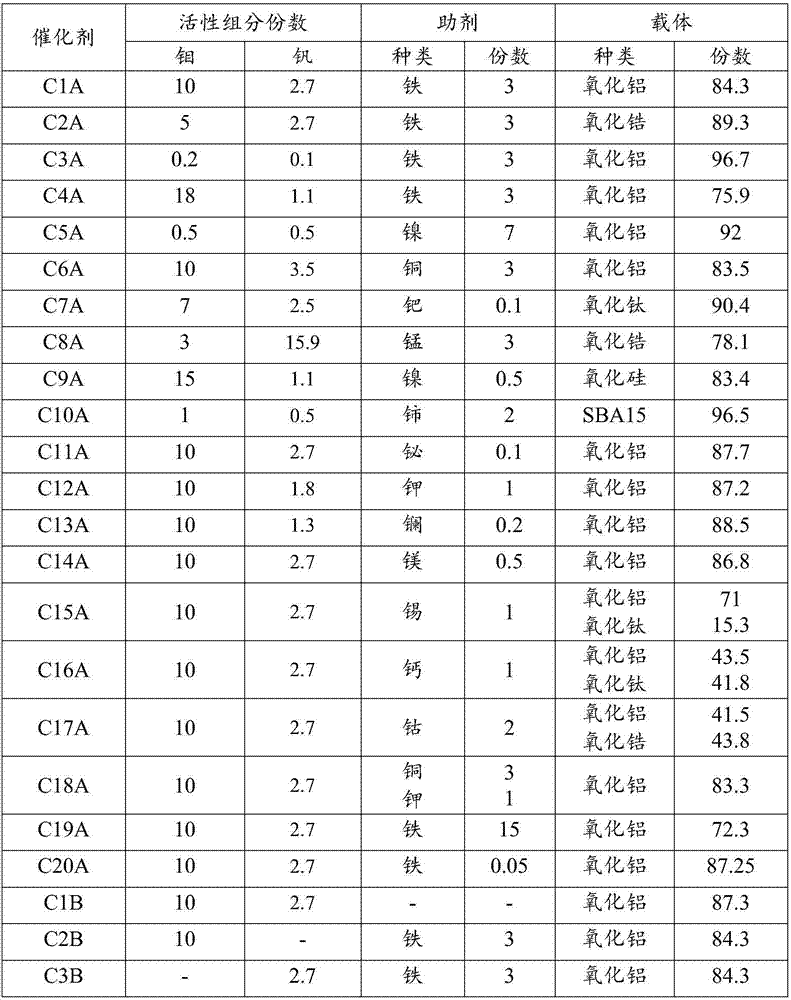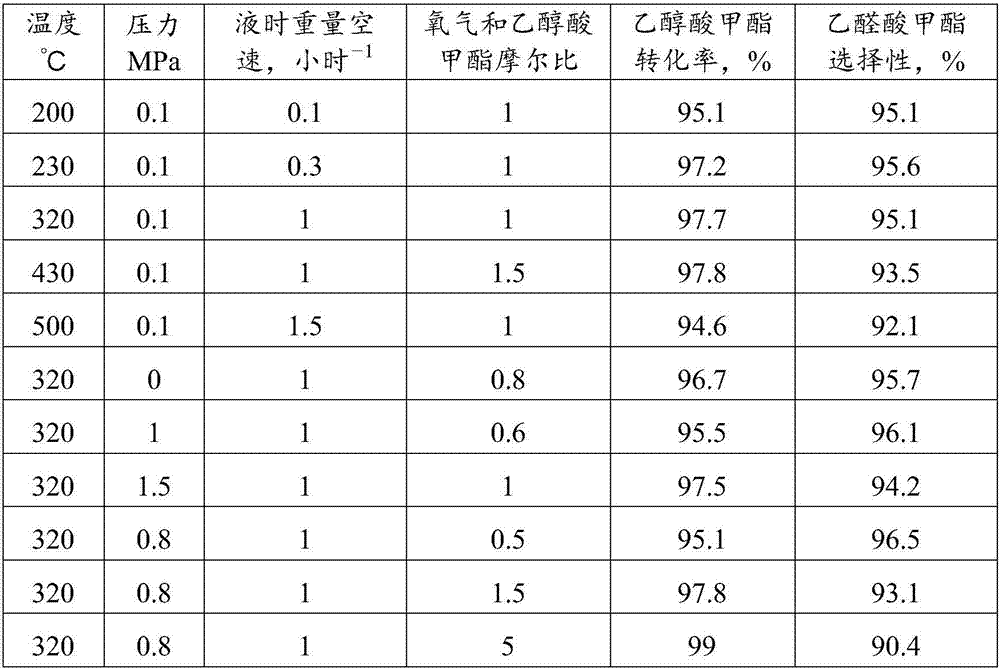Method for producing glyoxylate through oxydehydrogenation of glycollate
A technology of glycolic acid ester and glyoxylic acid ester, which is applied in the direction of carboxylic acid ester preparation, chemical instruments and methods, metal/metal oxide/metal hydroxide catalyst, etc., and can solve the problem of oxidative dehydrogenation to produce glyoxylic acid ester issues of low sex
- Summary
- Abstract
- Description
- Claims
- Application Information
AI Technical Summary
Problems solved by technology
Method used
Image
Examples
Embodiment 1
[0028] Prepare and stir 200ml solution I of ammonium molybdate and ammonium metavanadate containing 5.6% molybdenum and 1.4% vanadium, add 100g of alumina carrier to solution I and stir evenly to obtain slurry II, then mix 50ml iron-containing 6.6% ferric nitrate solution was slowly added dropwise to the slurry II, and then the pH was adjusted to 8 with nitric acid and ammonia water to obtain the slurry IV; after aging the slurry IV at 80°C for 8 hours, vacuum-evaporated to dryness at 90°C, and then roasted at 500°C The catalyst C1A was obtained, and the catalyst sample was taken for X-fluorescence (XRF) characterization test to determine the catalyst components. The results are shown in Table 1.
Embodiment 2
[0030] Prepare and stir 200ml solution I of ammonium molybdate and ammonium metavanadate containing 2.7% molybdenum and 1.4% vanadium, add 100g of alumina carrier to solution I and stir evenly to obtain slurry II, and then mix 50ml iron-containing 6.6% ferric nitrate solution was slowly added dropwise to the slurry II, and then the pH was adjusted to 8 with nitric acid and ammonia water to obtain the slurry IV; after aging the slurry IV at 80°C for 8 hours, vacuum-evaporated to dryness at 90°C, and then roasted at 500°C Catalyst C2A was obtained, and the catalyst sample was taken for XRF characterization test. The test results are shown in Table 1.
Embodiment 3
[0032] Prepare and stir 200ml solution I of ammonium molybdate and ammonium metavanadate containing 0.1% molybdenum and 0.05% vanadium, add 100g of alumina carrier into solution I and stir evenly to obtain slurry II, and then mix 50ml iron-containing 6.6% ferric nitrate solution was slowly added dropwise to the slurry II, and then the pH was adjusted to 8 with nitric acid and ammonia water to obtain the slurry IV; after aging the slurry IV at 80°C for 8 hours, vacuum-evaporated to dryness at 90°C, and then roasted at 500°C Catalyst C3A was obtained, and a catalyst sample was taken for XRF characterization test. The test results are shown in Table 1.
PUM
 Login to View More
Login to View More Abstract
Description
Claims
Application Information
 Login to View More
Login to View More - R&D
- Intellectual Property
- Life Sciences
- Materials
- Tech Scout
- Unparalleled Data Quality
- Higher Quality Content
- 60% Fewer Hallucinations
Browse by: Latest US Patents, China's latest patents, Technical Efficacy Thesaurus, Application Domain, Technology Topic, Popular Technical Reports.
© 2025 PatSnap. All rights reserved.Legal|Privacy policy|Modern Slavery Act Transparency Statement|Sitemap|About US| Contact US: help@patsnap.com


